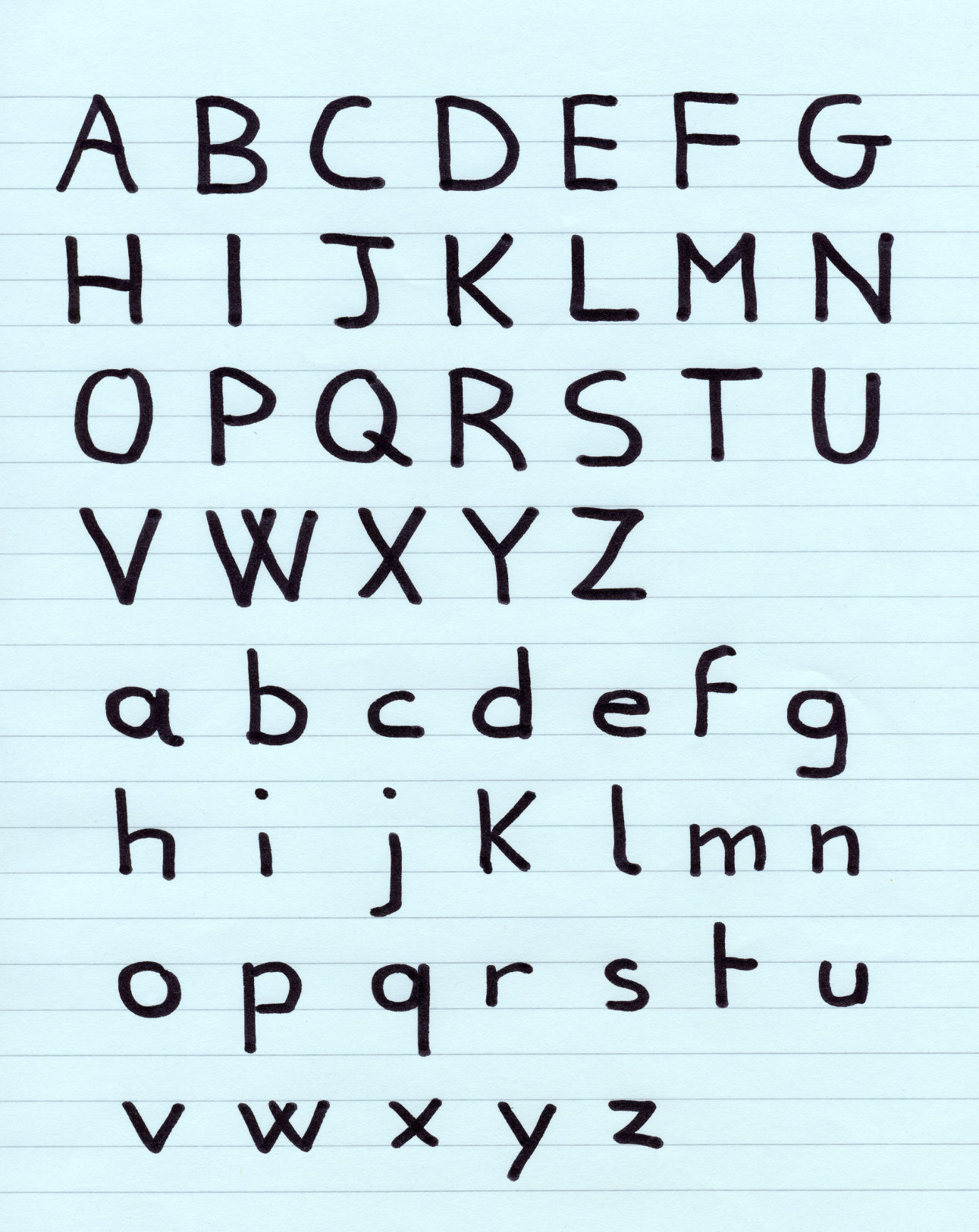Year: 2011
Can Your Fifth Grader Answer This Math Problem?
Thanks to Jeff for this…
Can the level of math education sink any lower?
Teaching Math In 1950:
A logger sold a truckload of lumber for $100. His cost of production is 4/5 of the price. What is his profit?
Teaching Math In 1960:
A logger sold a truckload of lumber for $100. His cost of production is 4/5 of the price, or $80. What is his profit?
Teaching Math In 1970:
A logger sold a truckload of lumber for $100. His cost of production is $80. Did he make a profit?
Teaching Math In 1980:
A logger sold a truckload of lumber for $100. His cost of production is $80 and his profit is $20. Your assignment: Underline the number 20.
Teaching Math In 1990:
A logger cut down a beautiful forest, because he is selfish and inconsiderate and cares nothing for the habitat of animals or the preservation of our woodlands. He does this so he can make a profit of $20. What do you think of this way of making a living? After answering the question, the topic for class participation is: How did the birds and squirrels feel as the logger cut down their homes? (There are no wrong answers.)
The Result In 2005:
Last week I purchased a burger at Burger King for $1.58. The young woman at the counter took my $2. I was digging for my change when I pulled 8 cents from my pocket and gave it to her. She stood there, holding the nickel and 3 pennies while looking at the screen on her register.
I sensed her discomfort and tried to tell her to just give me two quarters, but she hailed the manager for help. While he tried to explain the transaction to her, she stood there and cried.
Jeffrey J. McGovern
Jacqui Murray has been teaching K-18 technology for 30 years. She is the editor/author of over a hundred tech ed resources including a K-12 technology curriculum, K-8 keyboard curriculum, K-8 Digital Citizenship curriculum. She is an adjunct professor in tech ed, Master Teacher, webmaster for four blogs, an Amazon Vine Voice, CSTA presentation reviewer, freelance journalist on tech ed topics, contributor to NEA Today, and author of the tech thrillers, To Hunt a Sub and Twenty-four Days. You can find her resources at Structured Learning.
Share this:
Is Handwriting Like Camera Film–So Last Generation
Another problem for cursive in schools: Common Core is ‘silent’ on it, according to the Alliance for Excellence in Education. That’s like the Fat Lady warming up, but not sure when she’ll be performing.
Studies show one in three children struggle with handwriting. I’d guess more, seeing it first hand as a teacher. Sound bad? Consider another study shows that one in five parents say they last penned a letter more than a year ago.
Let’s look at the facts. Students hand-write badly, and don’t use it much when they grow up (think about yourself. How often do you write a long hand letter?). Really, why is handwriting important in this day of keyboards, PDAs, smart phones, spellcheck, word processing? I start students on MS Word in second grade, about the same time their teacher is beginning cursive. Teach kids the rudiments and turn them over to the tech teacher for keyboarding.
I searched for reasons why I was wrong. Here’s what I found:
- 1 in 10 Americans are endangered by the poor handwriting of
 physicians.
physicians. - citizens miss out on $95,000,000 in tax refunds because the taxman can’t read their handwriting
- Poor handwriting costs businesses $200,000,000 in time and money that result in confused and inefficient employees, phone calls made to wrong numbers, and letters delivered to incorrect addresses.
Read on:
Schools: Less cursive, more keyboarding
BROWNSBURG, Ind., Aug. 28 (UPI) —
Officials in an Indiana school district said cursive writing lessons will be scaled down this year in favor of computer keyboarding.
Share this:
Tech Tip #19: How to Activate a Link in Word
As a working technology teacher, I get hundreds of questions from parents about their home computers, how to do stuff, how to solve problems. Each Tuesday, I’ll share one of those with you. They’re always brief and always focused. Enjoy! (more…)
Share this:
Find Great Kids Websites
They’re user-friendly, kid-tested, organized by grade and topic. Just click this link to Great Kids Websites and scroll down until you find your grade and subject.
Send me an email with any websites you use with your students:
Share this:
Google Earth: User Friendly in the Classroom
What an amazing program! I decided to devote a unit to it for my fifth grade technology classes. I gave them a list of locations which they had to locate on Google Earth  using the Fly To bar or with Google Earth Community, placemark them (with their choice of creative placemarks), create their own tour file folder under ‘My Places’ and save each location to their tour folder with one interesting fact (which didn’t include Boy is this a great place!). (more…)
using the Fly To bar or with Google Earth Community, placemark them (with their choice of creative placemarks), create their own tour file folder under ‘My Places’ and save each location to their tour folder with one interesting fact (which didn’t include Boy is this a great place!). (more…)
Share this:
Tech Tip #23: I Deleted a File By Accident
As a working technology teacher, I get hundreds of questions from parents about their home computers, how to do stuff, how to solve problems. Each Tuesday, I’ll share one of those with you. They’re always brief and always focused. Enjoy! (more…)
Share this:
How Blogs Make Kids Better Writers
If kids are inspired to write, they get better at writing. The trick is to make writing fun.
Blogs do that. The students get to interact with their favorite toy–a computer–and go online for legitimate purposes. They get to see their thoughts in print. What could be more appealing. Blogs and online forums are a teachers dream.
The problem is how teachers use these tools. Like every good skill, blogging and online writing requires a bit of explanation. Start with these simple rules:
- Be concise in a blog. Readers don’t go to blogs to read a novel. They want something that will help them in, say, a minute (that seems to be the average time people spend on a post)
- Be pithy. Readers don’t want to waste even that sixty seconds. They may get tricked the first time by a snazzy title, but not again. So, students must put their thoughts together in a cogent and concise arrangement.
- Be knowledgeable. There are so many bloggers out there, students must come across as intelligent on their topic and smart enough to discuss it in that one minute the reader gives them. How do they do that?
- Watch grammar and spelling.
- Pick a topic they know about. If it’s an opinion, pick something they have ideas about.
- Don’t tear down the other guy’s opinion as a way to promote their own. This sort of mean-spiritedness turns people off.
For more great reasons why blogs are good for kids, visit Educational Blogging Wiki–including helping them find their voice and empower their maturing identities.
Share this:
Tech Tip #20: How to Add A Link to Word
As a working technology teacher, I get hundreds of questions from parents about their home computers, how to do stuff, how to solve problems. Each week, I’ll share one (or more) of those with you. They’re always brief and always focused. Enjoy! (more…)
Share this:
Tech Tip #19: How to Activate a Link in Word
As a working technology teacher, I get hundreds of questions from parents about their home computers, how to do stuff, how to solve problems. Each Tuesday, I’ll share one of those with you. They’re always brief and always focused. Enjoy! (more…)
Share this:
Just Another Day In Computer Lab
Today, my guest blogger is Kristi Richard of South Bend, IN (Go Notre Dame!) She’s a web designer, owns her own freelance business called Studio 545, and
[caption id="attachment_4333" align="alignright" width="338"] Where’s the blue one go?[/caption]
Where’s the blue one go?[/caption]
volunteers one day a week to teach computer basics to grades six , seven and eight at Our Lady of Hungary Catholic School. In her words, “Our Lady of Hungary … received a nice donation of computers and internet service to get a computer lab up and running. I was asked to teach basic computer skills to the kids, and have enjoyed working with them for about four months now. I only work one day at week with the kids, but I have developed quite an appreciation for what teachers go through nine months out of the year!”
Kristi and I met online chatting about tech teacher experiences and she had me in stitches telling me about her escapades. I asked her to write a post so I can share it with you. Enjoy!
Sometimes the kids in my 6th – 8th Grade computer lab look at me as a computer genius, but I am thinking to myself “Whew, glad that worked, now remember what you did, Kristi”!
My second week of teaching this lab, my priority was trying to remember all the kid’s names. But shortly after the kids came in to the lab, all of a sudden four computers including mine went down. We are on a network, so I am thinking, “Now what do I do??” I kept myself under control and did what the tech guys always ask you to do. 1) are the cables plugged into the back of the computers (check!), 2) are the computers turned on (check!) . . . 3) are they plugged in correctly? So there I was, Mrs. Richard, on my hands and knees, ass in the air as I was looking under the lab desks to check the monstrous mess of cords, plugs and cables that hook up twenty computers along this section! I could hear the kids giggling at me while I continued to struggle in tight quarters trying to figure out which cord/cable/plug hooked to the computers that went out. Then came the hot flash . . . jeeze, not now!
After about seven minutes of searching, I saw it . . . the extension cord to a power strip was wrapped around a girls ankle and had come unplugged. She didn’t have a clue! She must have sat down and wrapped her ankle around the cord and just yanked the cord out of the power strip. NO CLUE as she sat there working away on her computer with this cord wrapped around her ankle! I unwrapped the cord, and debated for a second if this was the right cord, or if I would set off a huge power surge and kill a row of computers if i plugged it into the empty outlet. What did I have to lose? I was just a volunteer and I was dying under here! They applauded when I plugged in the cord and the computers went back on – it worked! “Mrs. Richard, you rock!!” (I thought to myself as i backed out from under the desks, face sweaty and red).
At 52, I am getting a bit old to be crawling around under desks. But somehow . . . I love it!
If you have a funny story you’d like to share with readers, email me at [email protected] or leave a comment here. Chances are, lots of other tech teachers and parents will relate to your experience.
Jacqui Murray has been teaching K-18 technology for 30 years. She is the editor/author of over a hundred tech ed resources including a K-12 technology curriculum, K-8 keyboard curriculum, K-8 Digital Citizenship curriculum. She is an adjunct professor in tech ed, Master Teacher, webmaster for four blogs, an Amazon Vine Voice, CSTA presentation reviewer, freelance journalist on tech ed topics, contributor to NEA Today, and author of the tech thrillers, To Hunt a Sub and Twenty-four Days. You can find her resources at Structured Learning.





































